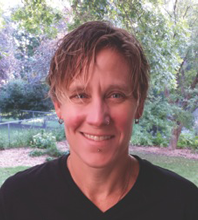
When There’s Violence in the Classroom
“The asceticism of teaching is the willingness to teach the students you have rather than the students you wish you had.” The rigor and conviction of Patricia O’Connell Killen’s claim about teaching as a practice has impacted my approach to the classroom more than anything else in the ten years I’ve been working at this difficult craft.
A teaching practice of being there, in a spirit of willingness, regardless of who shows up, is a challenge. I suspect I don’t have to convince you of this. Who among us hasn’t indulged in the faculty bonding ritual we so enjoy -- the one where we chuckle while complaining about our students showing up unable to write or uninterested in reading critically?
It’s challenging. But this practice—this discipline—has made me a better teacher in many ways.
When it comes to race, it’s made my work with white students more productive and my anti-racism commitments more sustainable. Cynicism is corrosive. It builds up when I disparage (even if only in my mind or to other colleagues) white students who say things that are ignorant, racist, or just don’t “get it.” I now know ignorance and racism are not obstacles in my teaching. They’re reasons I teach.
The asceticism of teaching is the willingness to work with the students who show up.
But what happens when there’s violence in the room? When the first day of class is the same day as Michael Brown’s funeral? When the shamefully small number of Black students in the room are raw and angry, and the shamefully large number of white students are clueless and dripping in white denial?
What does a willingness to teach the actual students in the room look like then?
Of course, there’s always violence in our classrooms. Structural violence walks through the door in the diverse experiences of our students. We see it in the very constitution of higher education when we notice who’s there and who’s not.
But this was the first day of the semester and the violence more palpable. Without the benefit of prior weeks of trust building on which I could draw to both mourn and challenge, being simultaneously present to differently-located students, figuring out what an ascetic practice looked like seemed an insurmountable task.
I’m never afraid to raise race in my classrooms because I might make white students shut down. I realized long ago that some will shut down and others will not, and that I never know ahead of time who will do what. So my job is simply to teach.
When I’m afraid, it’s of what my white students might say—what I know they will say—and how it may impact my African American and Latino students. These students already spend too much time and energy at a predominantly white institution (PWI) like mine navigating a deeply ahistorical, denial-inflected, toxic culture of whiteness.
My ascetic practice demands I work with my white students with a willing spirit, but always give my pedagogical energy and creativity first to students of color. They carry the greater risk.
pedagogical energy and creativity first to students of color. They carry the greater risk.
And this semester on that day the risks seemed greater. White students’ denial seemed more violent. But silence, for these same reasons, seemed less an option.
I didn’t resolve any of these large problems. Instead, when my friend, Melanie Harris, told me she would teach Martin Luther King, Jr. that first class morning I agreed to do the same. We walked into our geographically distant classrooms with a shared commitment.
I taught “Where Do We Go From Here?” My students read it in class and then wrote and then talked with care.
Asceticism that morning meant admitting I didn’t know how to teach and needed to turn our collective attention to a sacred text instead.
On a day as lament-filled as was August 25th, it’s probably appropriate it didn’t go that well. Turns out my white students don’t like King as much as they thought they did. But that was actually a pretty valuable thing for them to learn and the semester’s work required of me got really clear.
My African American students experienced the presence of a sacred and prophetic voice with them in the room. They didn’t have to lead the charge to combat white denial. King led it for them and I tried to have his back. I think they also learned I would try to have theirs too.
As I said, by “teachings standards,” it didn’t go that well. But ascetic practice requires a way of being that, in some moments, asks for mutually exclusive behaviors because the violence between and among us is simply too great. In that moment, the most important commitment we can make, the only commitment we can make, is to keep practicing.
Thank you Dr. Harvey for recognizing that violence takes more than one form and students who are a minority in any classroom can experience violence psychological, spiritual and physical violence in the room. Our jobs are to teach, regardless. Too many trivialize the impact of racism, classism and sexism on human beings that rear their deadly heads in covert and subtle ways.